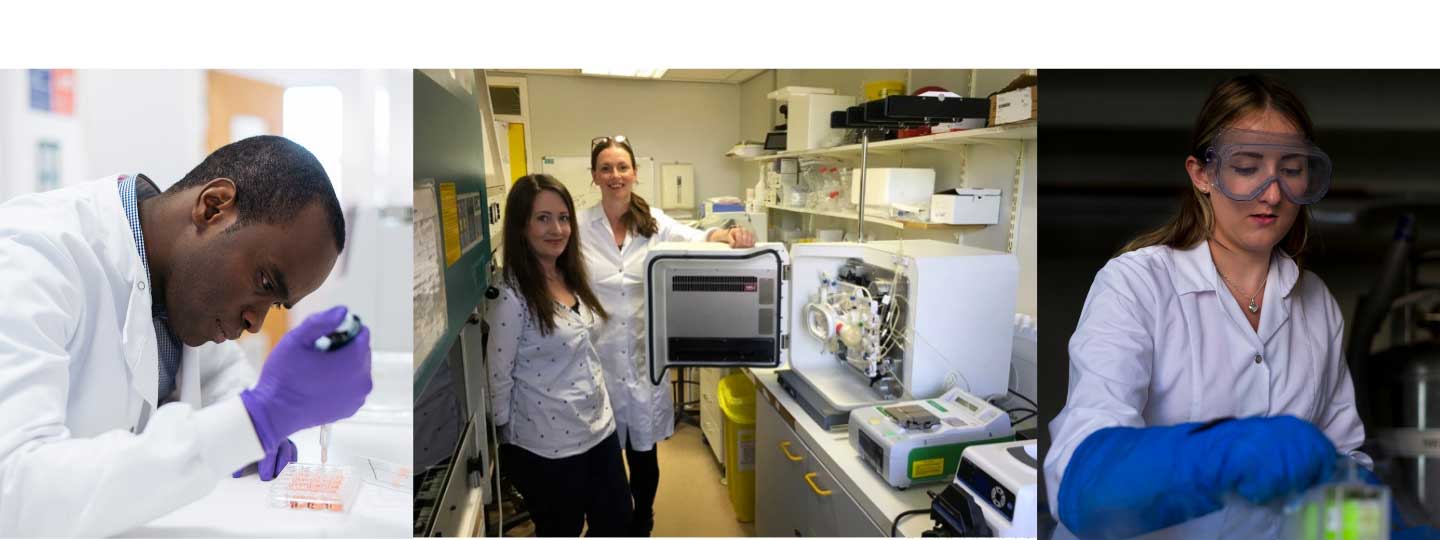How can we avoid joint replacement in osteoarthritis?
03 December 2020
Damage caused by osteoarthritis can lead to a need for joint replacement which involves major surgery. Although the results are largely very positive overall, not every outcome is good and sometimes the patient has to wait a significant amount of time to have this surgery.
New treatments are needed that are less invasive to repair and regenerate the patient’s own joint. This could be used at an earlier stage of the disease, delaying or replacing the need for joint replacement.
Can our own cells, or those from other people, be used to help repair the damage caused by arthritis?
That’s one of the questions being asked by our Tissue engineering and Regenerative Therapies Centre Versus Arthritis.
Researchers involved have a range of expertise, but a common interest in developing the best new tissue engineering and regenerative treatments for osteoarthritis.
The team are looking into how each possible treatment works, how effective it is, and overall which one is the best treatment for an individual.
This will ensure that each patient can get the right treatment at the right time.
Are there any new treatments for early stage osteoarthritis?
Yes! Researchers at the centre have played a pivotal role in the development and approval of ACI (Autologous Chondrocyte Implantation) treatment in the UK, now available on the NHS.
In ACI a small sample of cells is taken from the joint of someone with osteoarthritis, and a fresh supply of healthy cells is grown in a laboratory over about three weeks. Then these cells are inserted into the damaged area, under a flap which is stitched and glued in place.
Gradually, new cartilage starts to form in the treated area. A person is usually in hospital for just one or two days after having the procedure, and then moves on to rehabilitation and physiotherapy.
The ACI procedure works well at repairing small areas of cartilage damage, so is currently recommended for people with early stage osteoarthritis only.
What about other new treatments?
Stem cells hold great potential for new treatments; they are often thought of as the body’s own repair kit, as they are able to become specialised cells (for example, a cartilage cell), as well as reducing inflammation.
Researchers at the centre are investigating if stem cells can be used to improve the ACI procedure. They are running the ASCOT clinical trial to compare cartilage repair when using cartilage cells, stem cells, or a combination of the two.
ACI and the ASCOT trial are helping to deliver new, regenerative treatments to people with osteoarthritis. Read Marianne’s story, who was part of the ASCOT trial.
What else are researchers at the centre up to?
- Predicting the outcome of ACI treatment
The team found certain molecules present in higher levels in people who do not respond well to ACI, so could this allow them to predict response before treatment?
- Identifying which cells are most effective at cartilage repair
Comparing cartilage and stem cells, and even subgroups of stem cells that are identified using small proteins on their surface.
- Investigating where the cells go after implantation
Tagging cells with magnetic particles and tracking them using MRI to understand where cells go and how they start cartilage repair.
- Investigating the stem cells that are naturally present in the joint
Knowing where the stem cells are and how they function in joint health and disease may help develop new drugs. These would target the stem cells in the joint to trigger or enhance cartilage repair and help to prevent osteoarthritis.
- Mechanical scaffolds to repair larger defects
Looking at whether load-bearing scaffolds could be used in larger areas of cartilage damage and if cells or molecules that promote repair can be incorporated into this structure.
- Can we use someone else’s stem cells to repair a damaged joint?
Researchers are also looking to see if stem cells can be used to ‘turn back the clock’ and undo some of the damage which might otherwise lead to osteoarthritis.
- Making new models of osteoarthritis to study disease progression
Using bioprinting techniques that can print cells to create models that replicate tissues. These can be used to study osteoarthritis more effectively or test new drugs.
Our investment into future treatments
We currently invest £134.6 million in cutting-edge research, of which over £60 million (45%) is dedicated to inflammatory arthritis and immune system research, aiming to better understand arthritis as well as develop new drugs, treatments and ways to manage the condition. Ultimately, this research aims to improve the quality of life for people with arthritis.
Find out how you can support our vital services and help people living with arthritis.
Get the support you need
- If you would like to talk to someone, you can call our free helpline on 0800 5200 520
- Talk to our arthritis virtual assistant, 24/7
- Join our online community
- Stay in touch and follow us on Twitter, Facebook and Instagram.